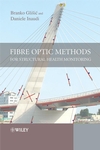
Sensors that dotted and crisscrossed the seven bridges that were lifted, driven, launched and lowered into place along I-80 have told officials in charge of the project that the structures responded as they were designed to.
In past bridge projects around the nation, prefabricated decks haven't been lifted and transported to the extent the replacements along I-80 were, so monitoring the integrity of the structures was important, Utah Department of Transportation officials said.
"We had real-time data during the moves that let us monitor the stress and strain on the girders and the bridge deck," said Shana Lindsey, director of research and bridge operation for UDOT. "The sensors allowed us to see if we went beyond the tolerance levels of the materials, and we didn't."
As each bridge moved from the farm to its final location, 28 long-strand fiber optic sensors sent out more than 100 readings per second on the state of the structure. In real-time, a crew of engineers and specialists analyzed the data on-site to gauge the strain on points of stress for each portion of the transport. The readings alerted the observers to potholes or bumps in the route, telling them how the bridge responded.
"If you can pick up the movement of a structure while they're still in their embryonic stages, you can prevent repairs and problems before they happen," said Tom Winant, vice president of technical sales and marketing for Osmos USA.
The bridges were designed to allow for up to three to four inches of deflection on either end and still be able to return to their original state, Lindsey said. According to the sensors and the analysis of engineers, the bridges did not deflect to those levels, but some hairline cracks did appear on the structures.
The cracks were expected, though, because it is concrete's nature to crack even without being transported, Lindsey said. To prevent salt and water from entering into the cracked areas, UDOT has scheduled a polymer overlay to coatthe structures to protect them from early erosion or deterioration.
Lindsey said the massive amount of data compiled from each move will help UDOT refine its techniques and designs for future projects.
The results from the move verified the assumptions designers made when they began fabricating the bridges and planned the launch, said Roy A. Imbsen, an engineer and consultant to the project. With the data, Imbsen said UDOT would be able to implement specifications to the accelerated bridge construction process so other agencies could begin to use it, too.




No comments:
Post a Comment